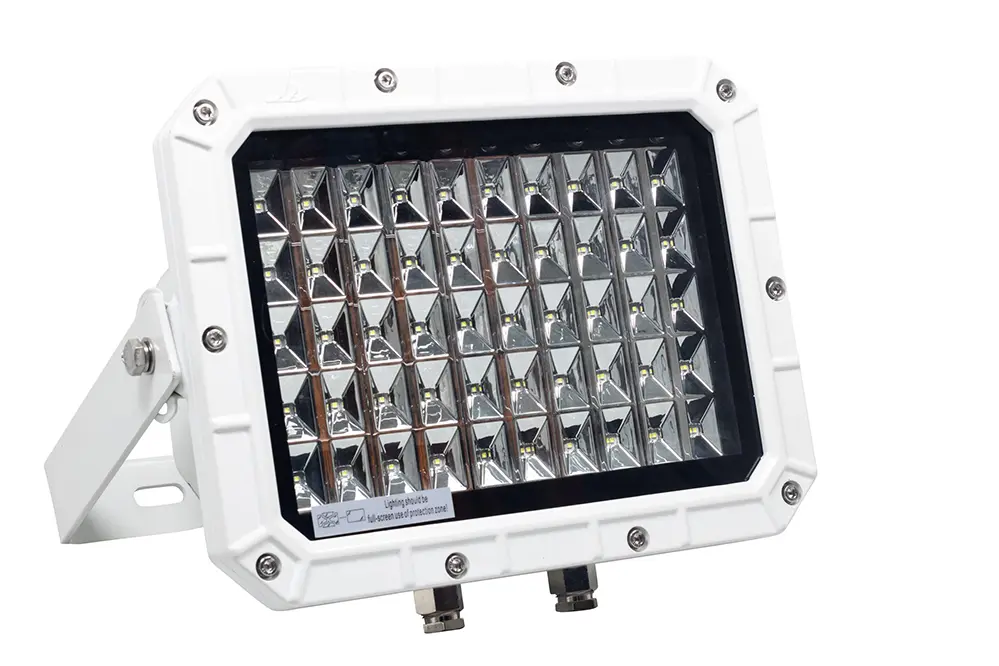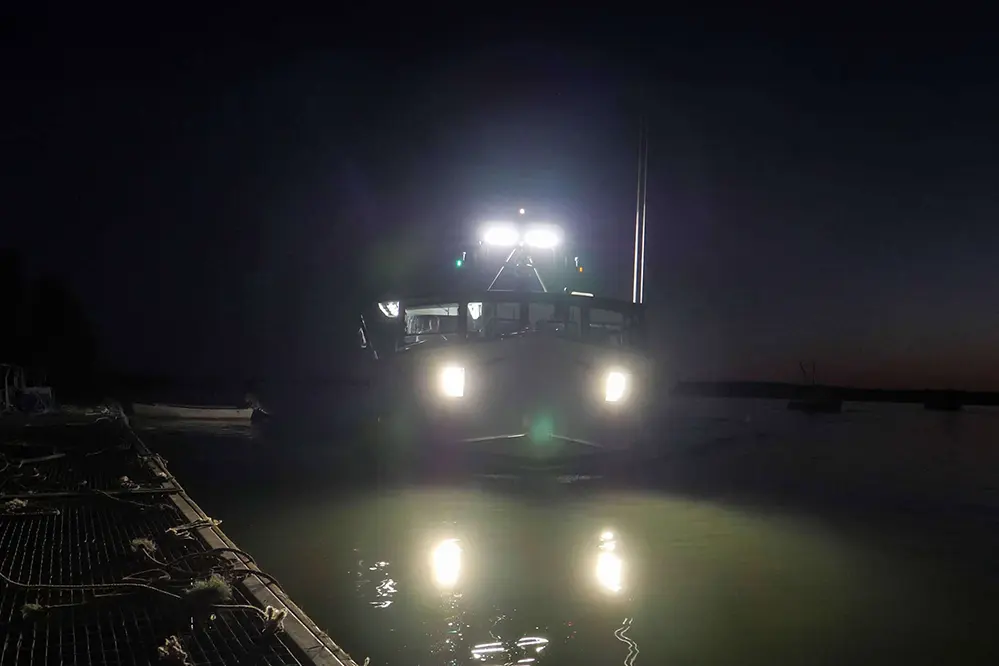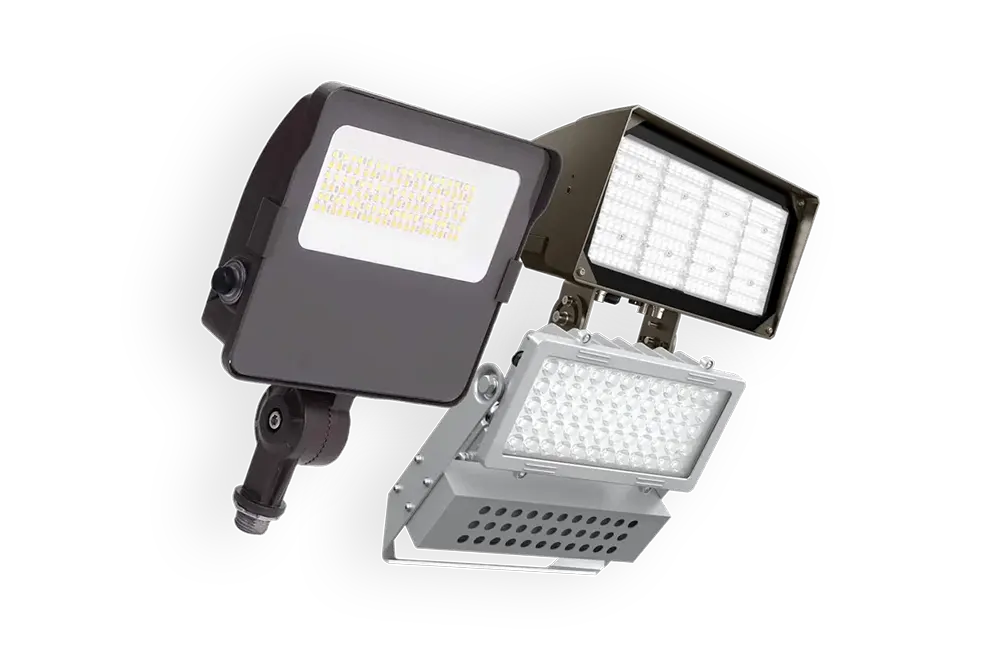Imagine navigating the vast, unpredictable ocean under a starlit sky, relying solely on the glow of your vessel’s lights to guide you safely through the night. This is where the significance of a marine grade light becomes profoundly clear. These specialized lights are not just a luxury; they are a necessity for ensuring safety and visibility in the harsh marine environment. In fact, according to the U.S. Coast Guard, proper lighting can reduce the risk of nighttime accidents by up to 70%.
Understanding the importance of marine grade lights is crucial for anyone involved in maritime activities. These lights are engineered to withstand the corrosive effects of saltwater, the relentless battering of waves, and the unpredictable weather conditions at sea. Surprisingly, despite their critical role, many boat owners are unaware of the specific features that differentiate marine grade lights from standard lighting solutions.
As we delve deeper into this topic, you’ll discover the unique characteristics that make marine grade lights indispensable, and why investing in them is a wise decision for any seafarer. Join us as we explore the world of marine lighting and uncover the essential insights that will illuminate your maritime journey.
Understanding Marine Grade Lights

Marine grade lights, including those designed specifically for coastal applications with considerations for housing coastal lighting, stand as a beacon of resilience, engineered to endure the punishing conditions of the coastal and marine environment. But how exactly do they achieve this?
In recent years, technological advancements have significantly enhanced their functionality, enabling them to withstand salty air, high humidity, and corrosive elements. These lights have become an indispensable part of marine safety and efficiency.
To comprehend their robustness, it’s essential to look beyond traditional lighting solutions. Marine grade lights incorporate superior materials such as stainless steel and polycarbonate, ensuring they remain impervious to rust and wear from continuous exposure to harsh conditions.
While their durability is non-negotiable, these lights don’t compromise on performance either. With the advent of LED technology, marine-grade lights now offer increased luminosity measured in lumens, low energy consumption, and extended lifespans, reinforcing their critical role in modern maritime operations.
Ultimately, these advancements bring not only enhanced performance but also a lower ecological footprint.
Key Features of Marine Grade Lights
Understanding marine grade lights requires examining their core features.
First and foremost, their durability stands out above the rest. These lights are crafted to resist the harshest conditions of marine environments, such as saltwater corrosion, extreme weather, and constant motion of ships. Consequently, they are an ideal solution for ensuring continuous and reliable lighting on vessels ranging from small boats to massive ocean liners.
Resilient materials provide unmatched protection against elements.
These lights also offer versatility in installation—whether strategically positioned on a ship’s mast or placed internally to illuminate cabins or outdoor decks—demonstrating superior adaptability across many maritime settings.
Moreover, marine grade lights integrate cutting-edge technology with eco-friendly designs, fulfilling the evolving demands of the new year marine industry. Their robust nature coupled with efficient luminescence and application of coastal lighting techniques presents an inspiring example of innovation paving the way for safer, more sustainable nautical journeys.
Importance of Durability
The significance of durability in marine grade lights cannot be overstated. These lights excel in situations where reliability is of utmost importance.
With exposure to relentless salt spray and unpredictable weather, their resilience to corrosion is extraordinary. This ensures a long-lasting operational life despite harsh conditions.
Marine grade lights are engineered to withstand the test of time, keeping ships illuminated regardless of the challenges posed by the marine environment. By utilizing advanced materials that resist not only physical impacts but also chemical abrasions, these lights set new standards.
In a realm where the stakes are high, durability becomes the beacon of assurance that maritime professionals rely upon. It embodies peace of mind and operational excellence, a testament to uncompromising engineering designed to illuminate oceans with confidence and brilliance—truly the hallmark of innovation meeting necessity.
Corrosion Resistance Properties
Marine grade lights stand as a testament to exceptional corrosion resistance, a quality paramount in the maritime environment. But what makes this feature so vital in marine lighting?
Saltwater, with its corrosive nature, poses a significant threat to materials, often leading to rapid degradation. To combat this, marine grade lights use materials like stainless steel, aluminum alloys, and specialized coatings that offer unparalleled protection against corrosion. This advanced engineering ensures longevity and reliability.
Moreover, the harsh sun can accelerate corrosion, making UV protection essential. Marine grade lights often incorporate UV-resistant materials, further enhancing their durability. As a result, these lights remain robust and efficient, regardless of exposure to sun and salt.
Engineers design these lights with corrosion resistance ingrained in every component, leaving no room for compromise. By maintaining integrity even after prolonged exposure, marine grade lights exemplify resilience and innovation, setting benchmarks for all-weather performance.
In summary, corrosion resistance in marine lights assures maritime professionals of reliable operation. Trust in these innovations brings illumination that withstands and thrives amidst the ocean’s challenge.
Waterproof Design Explained
At the heart of marine grade lights lies an exceptional dedication to watertight construction, ensuring these devices perform optimally in challenging environments.
Waterproof designs undergo rigorous testing, adhering to exacting standards of water resistance.
This level of protection is necessary because marine environments subject lighting fixtures to a multitude of water exposure conditions, ranging from a gentle sea spray to powerful waves and torrential downpours. The meticulous engineering behind these lights guarantees that seals remain intact and impermeable, preventing any moisture ingress.
Sealing technologies are pivotal to the flawless operation of marine grade lights, often featuring a synergy of gasket placements and advanced materials like silicone and rubber compounds, known for their elasticity and durability. In harsh environments, waterproof lighting not only provides consistency but also reaffirms the notion of “safety”—an indispensable element in marine operations.
Material Considerations for Marine Lights
In the relentless and vigorous marine environment, the materials constituting marine grade lights must withstand formidable conditions that test their utmost resilience and durability. Whether it’s corrosive saltwater or the abrasive ocean breeze, every element is a potential adversary that these lights courageously defy.
Two predominant materials often considered for marine lighting applications are stainless steel and marine-grade aluminum. These materials are renowned for their unparalleled corrosion resistance.
Stainless steel offers exceptional strength and longevity, making it an excellent choice for fixtures exposed to persistent moisture. Marine-grade aluminum, prized for its lightweight properties, combines effortlessly with anodized finishes, enhancing its endurance and aesthetic appeal.
The optimal selection of materials plays a pivotal role in the long-term performance of marine lights. Determining the right balance between resilience and functionality ensures that these lights not only withstand the rigors of the sea but also exude reliability. As technology advances, manufacturers strive to innovate with various composite materials, ensuring continued improvement in both performance and sustainability. This progress invites a future where the boundaries of marine illumination are continuously expanded, offering new horizons of safety and capability.
Differences Between Marine and Regular Lights
Marine lights are engineered with robust materials to withstand the harsh marine environment. This ensures they can resist saltwater corrosion and extreme weather conditions effectively.
In contrast, regular lights are typically designed for indoor or mild outdoor use, where exposure to elements is minimal. They lack the specialized coatings that marine lights possess, making them less durable in maritime settings.
Furthermore, marine-grade lights prioritize waterproofing and airtight seals to prevent water ingress. Regular lights might not endure constant contact with water and may fail quickly without these protective measures.
The intensity and focus of marine lights are tailored to penetrate dense fog and darkness, essential for navigation and safety. Regular lights might not deliver the same level of visibility and precision under such challenging conditions.
Ultimately, choosing between these lights depends on the intended environment and necessity for resilience, with an understanding of what is a marine grade light essential for making an informed decision.
Common Applications for Marine Lights

Marine lights illuminate journeys at sea, ensuring safe navigation and efficient operations even in daunting waters.
On seafaring vessels, marine-grade lights serve a paramount purpose, accentuating the importance of clarity, visibility, and safety. These robust illuminations navigate the toughest conditions, be it fog or storm, and foster communication between ships. They encapsulate an essential function by enhancing the overall maritime experience and safety protocols, vital for thriving and secure oceangoing adventures.
Additionally, ports and harbors utilize marine lights as guiding beacons. They signal crucial instructions, ensuring that every incoming vessel can dock with precision and avoid potential hazards. Thus, such lighting infrastructure not only streamlines harbor activities but also upholds operators’ confidence in handling challenging scenarios.
Lastly, those invested in recreational boating or yacht lifestyles often opt for marine lights for aesthetic and functional reasons. These lights highlight the exquisite design of vessels and provide vital lighting for evening excursions. Ultimately, the implementation of marine-grade lights, whether for utility or leisure, shines as a testament to technological ingenuity and seafaring prowess.
Energy Efficiency in Marine Grade Lights
In an era defined by environmental consciousness, energy efficiency stands as a cornerstone of marine-grade lighting solutions.
In recent years, advancements in LED technology have propelled marine-grade lights into an era of unparalleled efficiency. These innovations deliver brilliant illumination at a fraction of the traditional energy consumption, transforming maritime operations globally. More vessels can now traverse longer distances without compromising on lighting quality, thereby revolutionizing energy use in the marine sector.
Indeed, it’s not merely about energy savings; it’s about a paradigm shift in how the industry approaches sustainability. The integration of efficient lighting systems ensures that ship operators not only cut down on fuel costs but also significantly reduce their carbon footprint. Thus, marine-grade lights are more than practical tools; they are agents of environmental stewardship.
Consider the durability and longevity these lights afford. The advanced construction materials and technology mean they’re not only efficient but have an extended lifespan exceeding up to 50,000 hours. This longevity further amplifies their eco-friendly profile, reducing the need for frequent replacements and thereby minimizing waste and associated costs.
Ultimately, the commitment to energy efficiency in marine-grade lights heralds a new era of sustainable nautical innovation.
Impact of UV Protection
Navigating the world’s waters exposes marine equipment to intense ultraviolet (UV) radiation, posing a significant challenge for maintaining long-lasting optimal performance. However, a remarkable advancement in the field has been the incorporation of UV-resistant materials, offering a transformative protective shield.
UV protection extends the life of marine-grade lights by safeguarding them against the destructive power of the sun’s relentless rays. This is vital for ensuring the lights’ reliability.
Particularly, advanced coatings applied to the light fixtures prevent degradation and discoloration, which would otherwise tarnish their functionality and aesthetic appeal.
This technology serves to ensure that not only are light fixtures immune to structural weakening, but they continue to shine brightly, undeterred by relentless sunlight.
Whether installed on commercial vessels or private yachts, their UV-resistant applications are engineered to thrive in extreme environments, preserving robust performance and appearance.
Thus, it’s clear that UV protection isn’t just about survival—it’s about thriving. Embracing technology that stands resilient against the elements reflects a commitment to excellence within the marine industry.
Types of Marine Grade Light Fixtures
Marine-grade light fixtures are crucial components in ensuring safety and efficiency aboard vessels. These fixtures are designed to withstand harsh maritime conditions.
In the realm of marine-grade lighting, a variety of fixture types are available, each meticulously designed to serve specific functions and applications. For instance, navigation lights are essential for indicating the vessel’s position and direction, a critical feature for marine safety.
Task lights, on the other hand, are implemented to illuminate specific work areas on board, facilitating precision and efficiency during operations, even in the most challenging environments. These lights enhance functionality without compromising energy efficiency.
Floodlights and deck lights are prominent for their ability to provide broad, high-intensity illumination for nighttime operations. They are robustly constructed to endure marine exposure. Such lights ensure optimal visibility and safety on deck.
Understanding the diversity of marine-grade light fixtures illuminates our path to choosing the right lighting solutions. These lights are indispensable for a well-lit, safe maritime journey.
Installation Tips for Marine Lights
Effective installation ensures optimal performance.
When preparing to install marine lights, start by selecting the ideal locations. Each light needs to align with its intended application, ensuring it provides the necessary coverage. Additionally, taking note of the different mounting requirements for varied lights will help guarantee stable and lasting installations.
Consult the manufacturer’s instructions diligently.
The right tools make complex tasks doable – an essential set includes screwdrivers, wrenches, and multi-meters, known for their reliability and efficiency. Also, ensure electrical connections are watertight to prevent moisture damage.
By understanding voltage requirements and adhering to recommended guidelines, you safeguard the sophisticated electrical systems that modern marine vessels rely on. This proactive approach not only prevents potential safety hazards but also extends the longevity of your lighting solutions, ensuring resilience and dependability on the high seas.
Maintenance and Care Guidelines
Routine maintenance is fundamental to maximizing the efficiency and lifespan of your marine grade lights. But what specific actions should you undertake?
In recent years, experts emphasized that regular inspections, cleaning, and timely component replacements are crucial. Checking for corrosion or any wear may prevent failures, ensuring your lights perform at their best even under harsh marine conditions.
Firstly, it’s vital to keep your lights clean since saltwater and marine residue can accumulate. Over time, this buildup can diminish light output and perhaps compromise electrical connections. A soft cloth and mild detergent are typically effective for cleaning.
Additionally, periodic checks of wiring and seals will contribute to maintaining integrity. Ensure that seals are tight and free of cracks, as this prevents water ingress, which might jeopardize electronic components and risk operational failure.
In summary, consistent upkeep instills confidence that your marine grade lights will operate flawlessly. Proper care can navigate any challenges.
Choosing the Right Marine Grade Light
Selecting the ideal marine grade light invites a penetrating exploration into the nuances of exceptional durability and illumination.
In recent years, seasoned professionals noted a shift towards LEDs, lauding their resilience, energy efficiency, and unmatched longevity under demanding conditions, positioning them as the luminary beacon of choice for mariners.
When embarking on this selection journey, it’s pivotal to contextualize your vessel’s specifications and demands. Consider the lumen output and beam distance to determine the suitability for nighttime navigation or enhanced visibility.
Examine the construction material meticulously; stainless steel or polycarbonate offers robust resistance against corrosion, an essential feature in the relentless marine environment. Also, prioritize lights with waterproof ratings like IP67 for assured protection against saltwater intrusion.
A thoughtfully chosen marine grade light is your luminous ally in exploration, embodying confidence across uncharted waters. Illuminate your voyage with foresight and assurance.
Conclusion
Understanding what a marine grade light is unveils a world where innovation and reliability ensure every maritime journey is brilliantly illuminated. These lights are more than mere fixtures; they embody cutting-edge technology designed to thrive in harsh marine environments, offering unparalleled durability and advanced functionality.
Specifically catered to the needs of mariners, marine grade lights provide exceptional illumination, resilience, and efficiency. They are crafted to withstand the corrosive effects of saltwater and the relentless challenges of the sea, making them indispensable for safe and effective navigation.
Ultimately, choosing the right marine grade light can transform navigation from uncertain to confident. This choice reflects a commitment to safety, progress, and bold exploration, as these extraordinary lights illuminate not just the path ahead but also the bright futures of maritime adventures.





